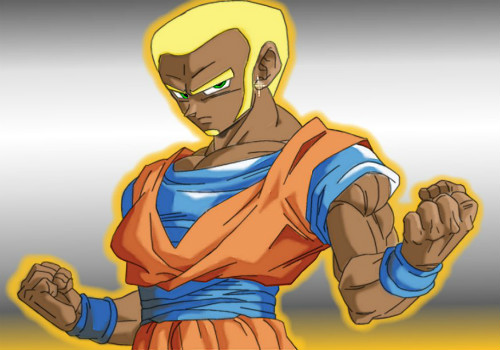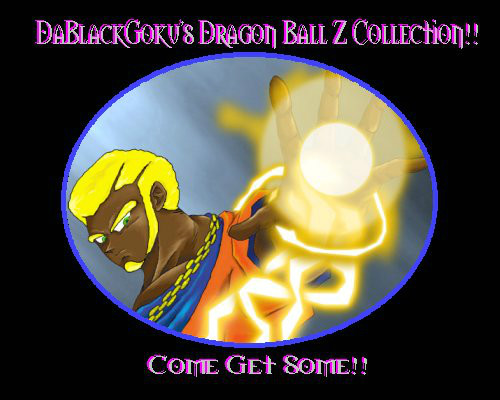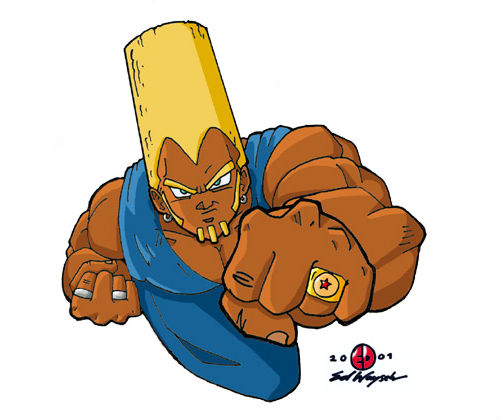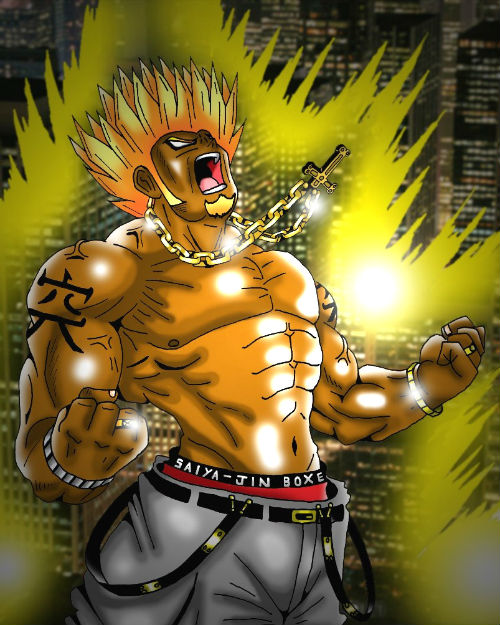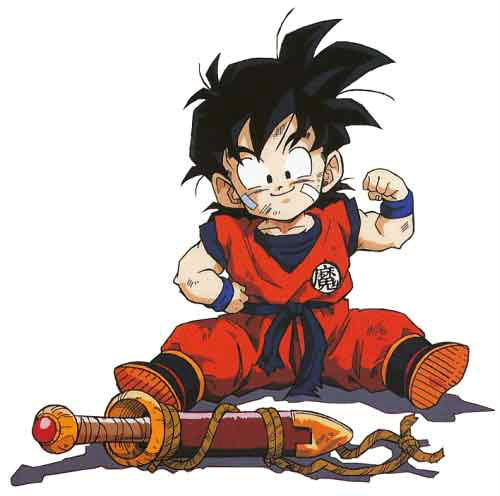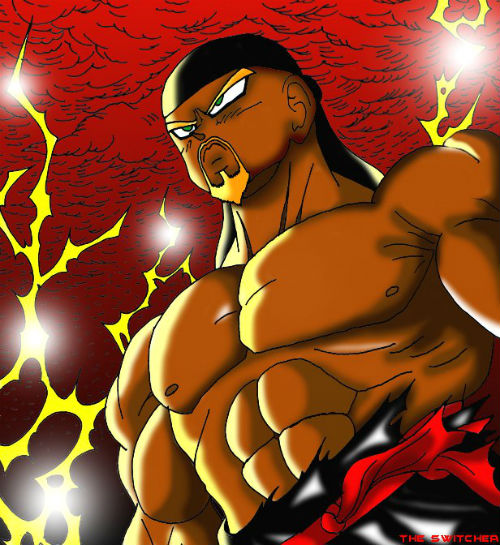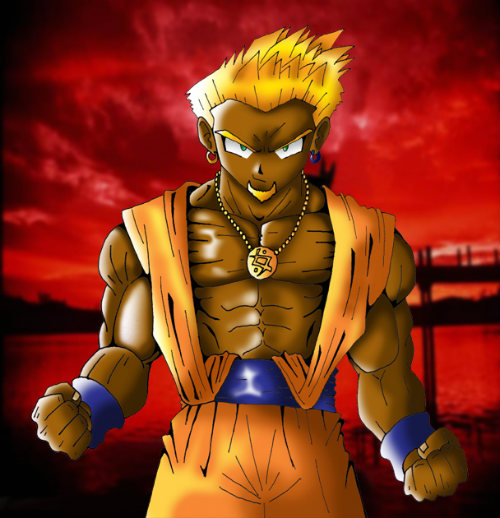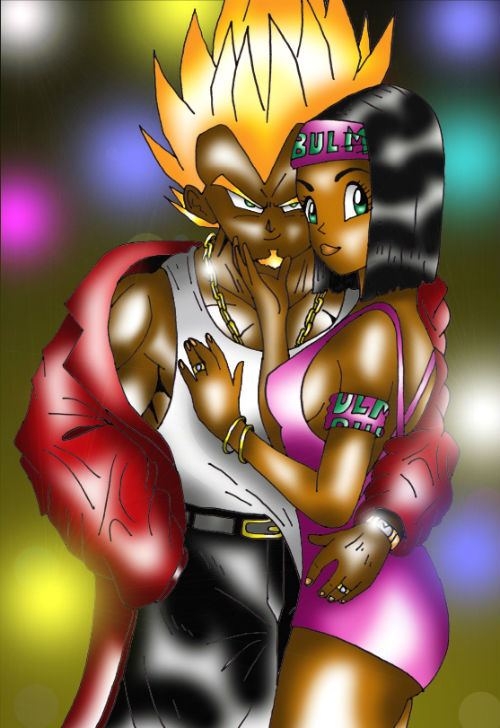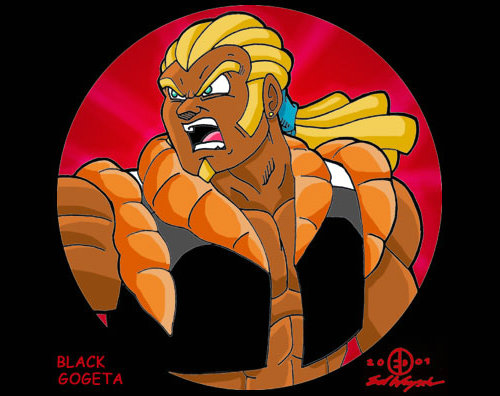The Black Goku
Have you ever asked yourself if Goku is black?
When people ask about Goku’s race, they tend to think Asian or Caucasian.
That’s because Goku’s skin tone appears light, even though it varied throughout the series, especially in Dragon Ball GT when he had a darker tan.
Also because of his literary and actual origins in East Asia.
But back in the late 90’s and early 2000’s, American Dragon Ball fans started to connect with Dragon Ball and relate it to their own lives.
Some African American fans assimilated Goku and purposefully made him black, so as to better connect with their hero.
Today you’ll learn about this social phenomenon.
You’ll also see how FUNimation, the American dubbing company that licensed Dragon Ball from Japan, may have contributed to or capitalized on this trend, and how this then resulted in Americans further assimilating Dragon Ball into their lives.
Get ready to “Step into Da Grand Tour” of The Black Goku.
DaBlackGoku.com
Dragon Ball reached the height of its popularity in America between 1999 and 2003. During this time, the series appeared on Cartoon Network and was seen by millions.
The affect that this had on American youth was interesting, to say the least.
The first notable example of the African American assimilation occurred in October, 1999, when a young man with the screen name DaBlackGoku founded DaBlackGoku.com
Like many others, the site had general Dragon Ball information and trivia. But the main feature was a showcase of fan created works of Goku with black skin.
Most were simply an original Toriyama drawing edited to have darker skin, but some were modified or even original creations where the character’s hair was styled in an afro or dreadlocks, while their clothes were adorned with ghetto paraphernalia.
Almost every major character was present, including black Krillin, black Trunks, black Piccolo, black Majin Buu, black Freeza and black Vegeta, with a golden watch hanging from his neck like Flava Flav.
The black Bulma and black Chi-Chi were drawn like ghetto girls with skimpy clothes and overly sexy poses.
And my favorite was Super Saiyan black Goku with a golden afro slam dunking a basketball!
In another illustration, black Goku had his dreadlocks stuffed underneath a backwards baseball cap, wearing basketball sneaks and street clothes, jamming to some music with his headphones on.
The owner held an annual “Draw Me a Black Goku” contest, where fans could submit their work for Dragon Ball related prizes.
What’s noteworthy is that in the rules DaBlackGoku stipulated the following, “No lude or degrading pics. This includes things like guns and gold teeth. Remember Goku is a Dragon Ball Z hero and is not into gangsta rap.”
From this and other content on the site, I surmise that DaBlackGoku simply wanted to express his fandom for the series and share that with others, in his own unique way.
Granted that this website is most likely a representation of a minority within a minority but its social and pop cultural significance is worth further attention.
Accepting and Assimilating
It seems like most of the drawings submitted to DaBlackGoku.com were by little kids.
For children, a hero with super human powers and the ability to save the world is easy to admire.
The illustrations depicted a hero that children were connecting with on a daily basis, yet altered from the original.
Children want to connect with their heroes completely, and the differences in skin color stand out, so these differences are negated or transformed and turned into something new, yet the same.
While the core feelings of the character remain unaltered, the externalities change and cultural additions are made that reflect the artists’ environment, such as clothing and hair styles.
The site even had its own rap song, submitted by a fan in 1999. The techno bass track repeatedly loops, “Here comes Da Black Goku… Hoe’s in this house, got some hoe’s in this house,” and “Bitches ain’t shit but hoes and tricks.” The last line of lyrics of this song are taken from a Dr. Dre and Snoop Dogg track.
And it’s not just Goku, either. I remember hearing from fans over the years that, in general, black people often associate with Piccolo, feeling that he is the “blackest” of all the characters.
Perhaps this is due to his physical features, his outcast relationship with the others, his stoic personality, or the deep rugged voice he was given in the American version.
The site stopped being updated after December, 2002, but it showed that for African American youth, Dragon Ball held a special place in their hearts.
It also shows the universal appeal of Dragon Ball. But it might be no accident that Dragon Ball, this inherently Japanese and East Asian creation, connected with so many young African Americans.
Kawaii Culture and American Consumerism
Dragon Ball is a martial arts epic, but it’s also a cute and silly show filled with gags and immature humor, such as poop jokes and boob grabs. These come from the silly mind of Akira Toriyama.
Japan’s stereotypical obsession with cuteness (Japanese: Kawaii, 可愛い) since the 1970’s can be seen in many aspects of its society. For pop cultural examples, look to Hello Kitty or Kirby, a floating pink smiley face. Even Dragon Ball is super cute at times.
But it’s believed by American marketers that Kawaii culture does not necessarily carry over to the general public.
Japan is a homogenous society, where generally speaking, people think alike, act alike, and look alike.
America, on the other hand, is a combination of many races and creeds, as it continually assimilates other cultures into itself. This includes foreign pop culture, such as that from Japan.
In Japan, cute and hardcore can go together. In America they apparently cannot.
Videogames or anime that are cute and colorful in Japan are often edited by American marketing departments to become dark, aggressive, angst filled, overall Americanized, or stereotypically in line with supposed consumer interests.
The makeover from cute to edgy is most likely a manifestation of the overall trend in America to make things more masculine.
The fact that Dragon Ball is already very masculine, filled with characters that have ‘angry eyebrows,’ and huge explosive fights, made it easy to capitalize on while completely downplaying the more cute, friendly and silly aspects.
Why was this done?
To make more money.
FUNimation’s Dragon Ball GT
The changes that FUNimation made to the American Dragon Ball Z were purposefully done to appeal to American youth.
This included a new soundtrack by Faulconer Productions, filled with guitar riffs and synthetic sounds, replacing the orchestral arrangements by Shunsuke Kikuchi.
It also included the addition of American slang in the dialogue, an ideology of ‘constant sound,’ and the removal of Japanese cultural references.
Having achieved success with such edits, FUNimation appeared to go even further to appeal to American youth with Dragon Ball GT, by directly targeting the African American demographic.
Stylistically, Dragon Ball GT represented a return to the cuter aspects of the original Dragon Ball, with Goku being transformed back into a child, and the main cast consisting of kids.
FUNimation felt they had to Americanize it in order for it to sell.
In November, 2003, FUNimation premiered a completely different rendition of Dragon Ball GT then had ever been seen in the world.
In an interview in Wizard Anime Insider magazine, Gen Fukunaga said, “If you think you know Dragon Ball GT, just wait! Nobody has done Dragon Ball GT like we have.”
And boy was that the truth.
They attempted to make it hard, dark, and street, even though it was the exact opposite.
The happy go lucky J-Pop intro song of Dan Dan Kokoro Hikareteku (“Gradually You’re Charming My Heart”) by Japanese band Field of View, and the series’ score, were replaced by a rap song and heavy bass lines.
The Japanese intro was a top charting love ballad used to express the friendship and camaraderie of the adventurers.
The American intro provided by composer Mark Menza was heavy, gloomy, rap-based and repeated the lines, “Step into da Grand Tour, Grand Tour, Grand Tour. Step into da Grand Tour [Grand Tour, Grand Tour], Dragon Ball GT!” The entire mood of the series was edited to appear edgy and serious, even though the actual content wasn’t.
FUNimation producers and executives, such as Barry Watson, decided that this would increase sales of the GT series.
They were right.
For the week of July 20, 2003, the first two GT tapes secured the #1 and #2 positions (compared to all other VHS sales) for the edited versions, and the #9 and #19 for the uncut versions. For DVD’s they earned #17 and #18. These home video sales prepped the market for the series televised debut.
Dragon Ball GT premiered on Cartoon Network in November, 2003, and scored a monstrous 9.7 on the Nielsen ratings for males age 9 to 14, and an 8.6 rating for males age 6 to 11.
Either FUNimation’s business decisions to appeal to Americans were an effective change, or Dragon Ball was an unstoppable winner no matter what was done to it. Artistic integrity be damned.
For the casual fan in America it made no difference that Dragon Ball was a Japanese creation, because they had no idea this was the case. It felt American, and so it was.
In either case, FUNimation’s profits soared, and Dragon Ball became further ingrained in the minds of American youth.
Dragon Ball Rap Music
As the years went on and young African American boys grew up, a small number began to express their continued fandom for Dragon Ball through rap music.
Each of these songs contained references to Goku and Dragon Ball pop culture, while at the same containing heavy rap culture references.
Some of them became popular hits.
In July, 2010 the rapper Soulja Boy (real name DeAndre Cortez Way) created a single titled “Goku.”
In “Goku,” Soulja Boy says, “Uhhhhhh, bitch, I look like Goku. Bitch, I look like Vegeta … Super Saiyan swagger. Bitches on my dick … Bitch I look like Gohan, smoking up that marijuana.”
Soulja Boy is a self professed anime fan. He released this alongside another single titled “Anime” where he apparently tried to say the word anime as many times as possible within the three minute constraint of the song, while dropping the names of different anime series to the beat amidst gunshot sound effects.
In September he provided a more on target follow up in tandem with Lil B titled “Super Saiyan,” with lyrics like “Super Saiyan Chain, Dragon Ball diamonds. Kamehameha, yep boy you know we shinin’. Gimme all your energy, yeah we ‘bout to power up. Super Saiyan swag so you know it ain’t no stoppin’ us. Goku on my wrist. Chi-Chi on my dick. I need Senzu beans cuz my swag super sick!”
http://www.youtube.com/watch?v=Mx772RKxAds
Many of the hardcore Dragon Ball fans laughed in dismay, while others suggested it might lead a new generation in an untapped section of society to watch the series.
In August, 2011, the rapper MarZ B, who actually goes by the pseudonym Black Goku, released a rap song in tandem with rapper Uriah, called appropriately enough,“Black Goku.”
The song is extremely graphic and profane, so I’ll exclude typing out the lyrics, but here is the video in case you want to hear it.
http://www.youtube.com/watch?v=I3XGLVLWqo4
Rap is a style of music where the artist sings about their surrounding environment and what they are passionate about. From these rap songs you can see that Dragon Ball definitely had an effect on these young men.
Dropping The Equivalent Beat
There are African American equivalents of most every type of white superhero.
But the assimilation of an already established character founded on East Asian legends and created in Japan that is then transmogrified into an African American cultural equivalent is rare.
In the case of DaBlackGoku.com, the process whereby a sub-culture of a community brought together by racial commonalities redefines the already seemingly established cultural assumption of Goku’s race to that of African American can be likened to the racial recreation of Superman or Jesus.
Superman, Jesus and Goku have all been transformed into a black equivalent, as have other messianic figures.
The questions I wonder about are these.
Would Dragon Ball have become so popular with African American youth if FUNimation hadn’t made the edits they did, to appeal to this demographic?
And would these youth have rapped about Dragon Ball if Dragon Ball GT hadn’t been given the rap treatment and given national syndication?
We can see that Dragon Ball Z had already been accepted and assimilated between 1999 and 2003.
When Dragon Ball GT came out, it was then aimed directly at this demographic, where it became further accepted.
Perhaps it was a combination of the right product, with the right treatment, at the right time.
But Dragon Ball GT is generally considered a lesser product compared to DBZ, so that may not explain everything.
What do you think?
Were FUNimation’s edits necessary? Were they good or bad, overall? And how do you feel about Dragon Ball being turned into rap music?
UPDATE on May 16, 2012: See this related Black Goku Art Gallery for more pictures of Black Goku.
